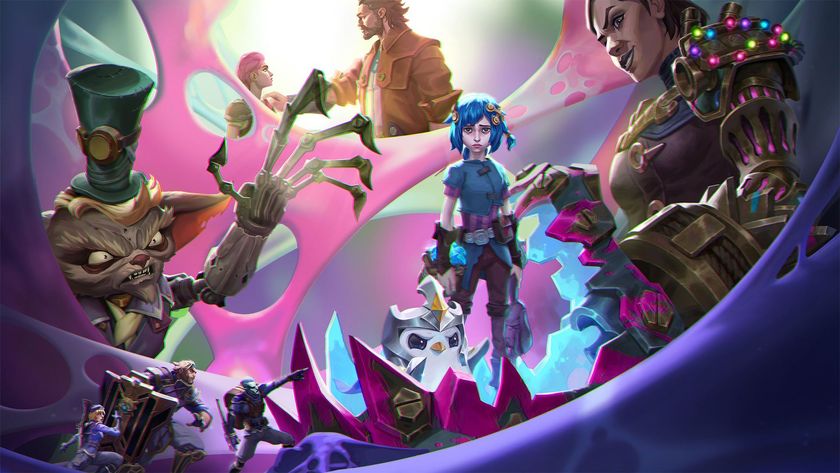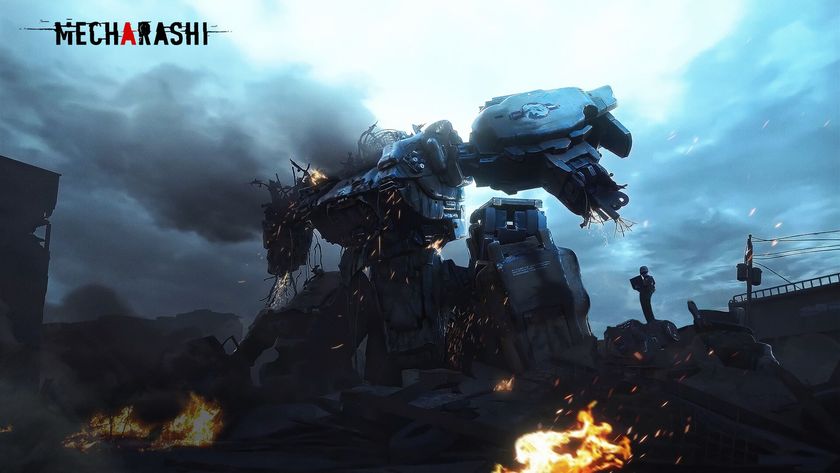Marvel's Midnight Suns: Hands-on with a promising Marvel strategy game hiding a slick RPG
Marvel's Midnight Suns is the strategy game I wanted and the RPG I didn't expect
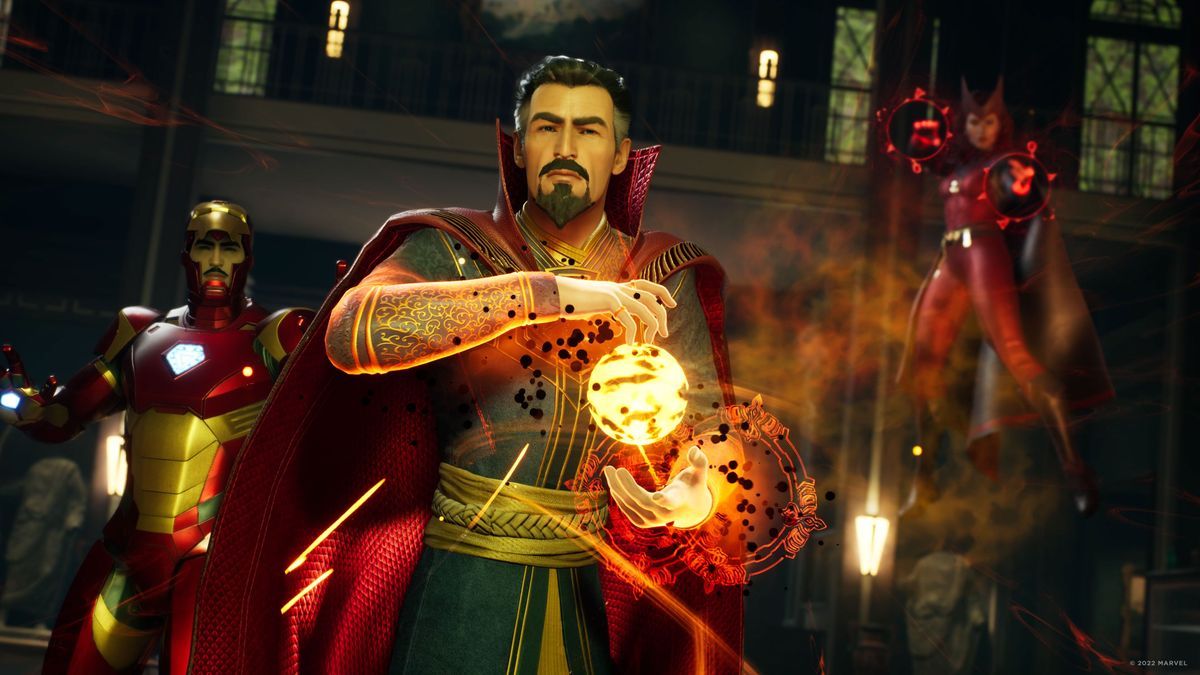
I finished my four-hour Marvel's Midnight Suns preview the same way I started it: not knowing or caring much about the Marvel universe, and convinced that XCOM studio Firaxis Games is a strategy powerhouse. I don't necessarily know how the studio's take on the license will resonate with a diehard fan of Marvel comics or films, but as a diehard fan of strategy and card games, it suits me just fine.
All I wanted from Marvel's Midnight Suns was a mechanically compelling tactics game. That's it. And while I've only played the opening hours of what's apparently a 60-hour game, I definitely feel like I got what I wanted. And to my surprise and delight, I also got an RPG component built on a robust friendship system that reminds me of some of my favorite JRPGs, and it might be good enough to make even me care about Marvel characters.
Don't go into this looking for XCOM
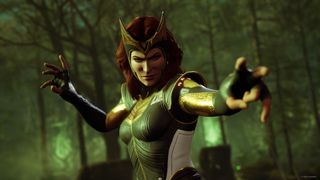
Let's get two things out of the way early. Marvel's Midnight Suns is not XCOM. I'm even more certain of that after playing it. For one, it's much clearer and less random. As director Jake Solomon told me – in a lengthy interview that you can read here – that's very much by design. It's deliberately more empowering than XCOM, and it proudly emulates the tactical transparency of something like Subset Games' Into the Breach. There's something comfy about knowing exactly how each turn will go, but Marvel's Midnight Suns still demands and rewards careful planning.
Midnight Suns isn't Slay the Spire, either. Again, Slay the Spire was a big influence, but Firaxis never asks you to build massive decks or play a zillion cards in a turn to set up some ridiculous combo. I wouldn't even describe this as a card game, really. Midnight Suns is a strategy game with cards in it. If the cards were potatoes, I wouldn't call it a potato game. Strategy is core. Cards just give Midnight Suns a way to balance heroes and inject some randomness into combat without veering into the XCOM-grade variance that spawned countless memes about a 95% chance to hit.
With the is nots out of the way, let's focus on what Marvel's Midnight Suns is. It's a third-person, turn-based strategy game where you raise and lead a squad of Marvel heroes in a fight against the demon Lilith and her army of infected villains. You play as the Hunter, an original Marvel hero and the only child of Lilith, who's awoken from their long slumber to send Lilith back to hers. This plays out in roughly a zillion missions – some optional and others story-driven – where you command squads of three heroes, which are usually customizable and won't always include the Hunter.
Just as I didn't need to know much Marvel stuff to get into Midnight Suns, you won't need to be a fan of Hearthstone or Monster Train or what-have-you to understand the card stuff. Each hero has a deck of eight interchangeable and upgradeable cards, and each turn you draw random cards from the combined decks of your party's heroes. Play attacks to hit dudes, play skills to buff your team, and spend the Heroism generated through these on powerful Heroic cards for big attacks and bonuses. Heroism acts a little like a mana curve, in that it punishes you for putting too many expensive cards in your deck, but deck-building is streamlined and the rules of combat are simple and intuitive.
Like playing with action figures, but way cooler
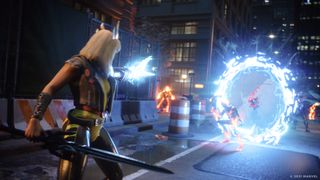
Combat becomes fun quickly, which is encouraging. The tutorial is a bit limiting but there's not a lot of table-setting, and this extends to how fast and snappy fights feel. Within just a few missions, I was already learning to love some of the early playable Marvel's Midnight Suns characters, especially Dr. Strange and Blade. Dr. Strange has a lot of powerful skills that set up future plays, and Blade is an absolute beast with a ton of lifesteal built into his high damage cards. This let me basically ignore healing with my Hunter and focus on their unique attacks, which are great at sending enemies crashing into each other for extra damage – another tip of the hat to Into the Breach and its essential bumping mechanic. Blade is also one of the few characters in this game that I already liked, so I had that going for me. I also know Spider-Man through his games and the old Sam Raimi films, so I'll probably put him in my main team later on as well.
Sign up to the 12DOVE Newsletter
Weekly digests, tales from the communities you love, and more
All the heroes I saw delivered a distinct power fantasy and served a clear role in combat, with the usefulness of some fluctuating with each mission's objective, from bashing dudes to capturing or defending objectives. I'm most interested in Magik, because in my experience with strategy games, getting around or otherwise manipulating the battlefield can be incredibly strong, so her portals are super promising. I like the aggressive play style of Ghost Rider, too, who loves to trade his own health for damage. Meanwhile, Captain Marvel is a solid all-rounder with a lot of tank utility and burst damage, and I'd say she has some of the best attack animations too. The presentation is stellar all around, though, with punchy effects that don't overstay their welcome.
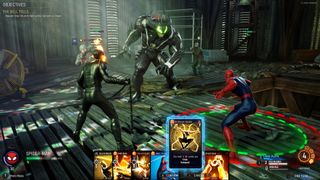
The Hunter is unique in that, on top of their sex and appearance, you can customize their abilities and skew them toward offense or support by leaning into light or dark tendencies through the story (which are not necessarily good and bad). The light hunter focuses more on healing and utility, and the dark hunter specializes in all-out attacks. I'm a bit worried that this will turn into yet another video game karma system that tacitly punishes any choice other than pure light or pure darkness, but for now I'm intrigued by how you can use the more malleable Hunter to compensate for the shortcomings of your other heroes.
Environments are also key to effective strategies, and this was one of the biggest learning curves for me. You don't take cover in Midnight Suns, but you'll still want to look around for small or large debris to vault over for special attacks or to simply chuck at enemies. By default, you can only play three normal cards a turn – though there are many ways around that limit – but you can also spend Heroism on environmental attacks to extend your turns and pick off problem enemies.
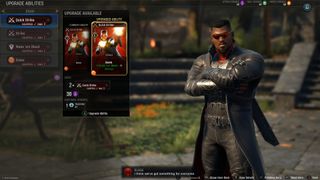
In only a few hours, I also started to see noticeable changes in my favorite heroes. I got a duplicate card for Blade and used it on an upgrade, for example, letting that card draw additional cards and buff their effects. I'm told that, later on, cards will start to get random effects that can turn weak cards into must-plays or unlock new combos entirely. You'll need to collect gamma coils – among other materials of various rarities – out in missions to upgrade and unlock things like this, which loosely mirrors the resource and research side of XCOM, and I can see it becoming just as engrossing here.
I'm told by Firaxis that you'll generally want to focus on a core group of four or five heroes in a playthrough, building them up as much as possible rather than spreading yourself too thin. The more you use heroes and level them up, the stronger they'll get and the more abilities you'll obtain, so it pays to specialize. Some missions require certain heroes, some of whom aren't unlocked until much later on, and these give you a chance to sample other play styles. It feels like the varying difficulty levels can accommodate all approaches if you do want to 'main' everybody, but I'd rather build one strong team, especially given how friendship works in Midnight Suns.
Just a couple of bros broin' out
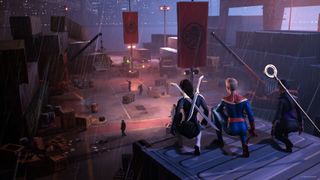
Using heroes in combat does more than level them up; it also builds a bond between your Hunter and those around them. You can deepen that bond back at the Abbey, the game's explorable and upgradeable hub, through JRPG-style hangouts with branching dialogue. Solomon told me that Firaxis looked to the likes of Persona and Fire Emblem for reference here, and even some dating sims as a fringe example, and it shows.
I've always loved this kind of weaponized characterization – getting stronger by spending more time with your favorite party members and pursuing their stories – and it works incredibly well with a cast like this. On a gameplay and narrative level, I was quickly getting invested in my motley crew of heroes. Reader, I am a grown-ass man with virtually zero attachment to Marvel anything, but believe me when I tell you that I was genuinely disappointed when I accidentally pissed off Blade and lost one (1) point of friendship. This bodes well for the effectiveness of the friendship system, though perhaps not my relationship with Blade.
I couldn't tell you if Iron Man's mustache has been rendered in accordance with the hallowed Marvel style guide, but I can say that I enjoyed talking to all the heroes around the Abbey and want to spend more time with them. Some of the animations are still a bit wooden, but I'm willing to chalk that up to the game being several months out from release. The Abbey's pleasingly cozy, and it's even got a dog – a lovable hellhound named Charlie, and yes, you can pet her. The puzzles and collectibles dotted around the Abbey feel a bit shallow so far, more set-dressing than anything, but they're at least nice little toppings.
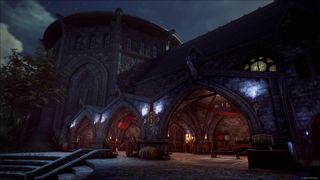
There's already a lot more to the Abbey than your usual XCOM headquarters, and I'm looking forward to upgrading it throughout the campaign to unlock more facilities. Combat is still handily the focus of Midnight Suns, and it's super satisfying in action, but there's a surprising amount to do off the field as well, and that side of the game could end up being its secret sauce. It was definitely the biggest surprise for me, and I can easily see long-time fans of these heroes getting even more invested in the friendship stuff.
The most positive thing I can say after a preview like this is that I want to play more of the game, and that's certainly the case here. I want to see the Abbey fully upgraded. I want to know how conversations evolve as you get closer with specific heroes. I want to see Blade with a maxed-out deck kick ass in a high-difficulty mission. Marvel's Midnight Suns is an odd blend of genres and characters, but the Firaxis glue is strong and it feels like enough to hold it together. It is not XCOM: Marvel Edition, but I think a lot of fans will find a lot to like if they can look past that expectation.

Austin has been a game journalist for 12 years, having freelanced for the likes of PC Gamer, Eurogamer, IGN, Sports Illustrated, and more while finishing his journalism degree. He's been with 12DOVE since 2019. They've yet to realize his position is a cover for his career-spanning Destiny column, and he's kept the ruse going with a lot of news and the occasional feature, all while playing as many roguelikes as possible.
